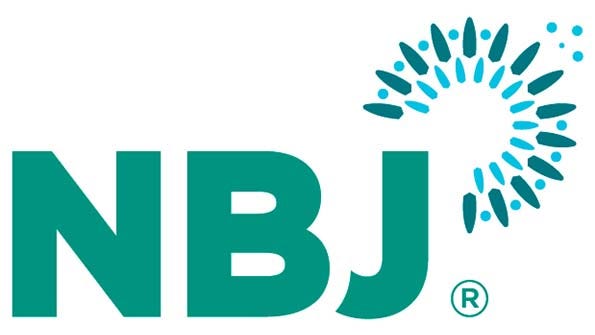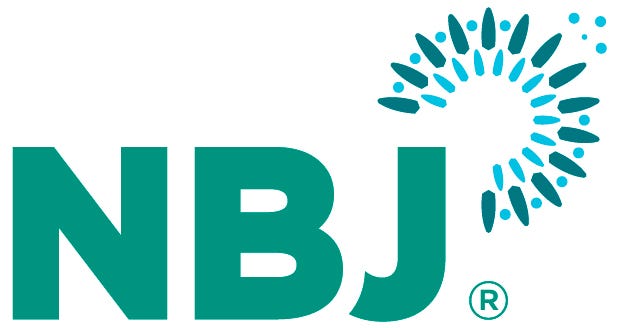November 27, 2018

Sports nutrition, it appears, has entered the shake-before-serving era.
Ready-to-drink functional sports beverages are the stars of the category. NBJ estimates 16.1 percent growth for the category, which consists primarily of protein-centric ready-to-drink (RTD) beverages such as Hormel’s muscle milk (alone reported to command $300 million globally). Once consumed mainly by muscle heads and hardcore athletes, these beverages have become staples for a broad swath of consumers, from time-strapped moms to folks looking to add some sports-aura vigor to their meal replacement.
According to Steve French, managing partner at NMI (formerly known as the Natural marketing Institute), the use of RTD functional sports beverages skews toward millennials and men. “It’s not like women or the weekend-warrior baby boomers are not consuming these beverages, but it’s the men and younger group who are really picking up and driving the growth,” French says. “millennials are reshaping everything, and if you look at beverage consumption, they are much less likely to consume carbonated soft drinks and a whole host of other products popular with previous generations.” Other left-behind legacy products include traditional sports hydration drinks, he adds, which many consumers now realize are no better nutritionally than sugary sodas.
Key growth generators
Many different factors are likely fueling this category’s double-digit growth. At the top of the list is convenience. RTD functional sports beverages allow users to grab, sip and fill up on essential nutrients without sitting down to eat, making a mess or having to clean up afterward. making a shake or smoothie at home requires assembling ingredients, pouring and blending. An RTD requires unscrewing a cap. “Convenience is a definite sales driver across all food and beverage categories,” French says. “I mean, look at the move into RTD by a whole range of categories. Cold-brew coffee is a good example. It, too, is experiencing significant growth.”
Another growth factor for RTD functional sports drinks is, simply, more and better products available. French says there have been improvements both in product development and manufacturing. “There are some unique manufacturing capabilities providing solutions to this category, and these sports nutrition products have continued to add more relevant nutrients at significant dosage levels,” he explains. “brands have definitely been looking at opportunities away from typical mainstream sports nutrition and toward meeting consumers’ particular needs, whether that’s high in protein or other macro- and micronutrients.”
RTD beverages also tend to win out in flavor and mouthfeel over mix-at-home protein powders, giving them another advantage. “The flavors that manufacturers put into mix-at-home powders are different than those they put into RTDs, which are purpose-built drinks that aim to optimize mouthfeel and taste—not easy to do with a shaker bottle,” says Anthony Almada, founder, president and chief science officer of IMAGINutrition Inc. “So when you have a contract manufacturer that is an expert in blending powders with liquids to make RTDs, the RTDs will taste better than powders.” This is especially the case with plant proteins, he adds.
Natural, organic, clean label
The increasingly in-demand product attributes of natural, organic and clean label are also aiding this category’s growth. “Natural and organic are almost the cost of entry these days,” French says. “The whole clean-label revolution is being driven by a cultural shift to transparency and consumers wanting to know what’s in the products they consume and use, regardless of category.” When it comes to nutrition, clean label is even more important, French says, because consumers are looking for functionality, not just refreshment.
The desire for these attributes opens doors for smaller, more innovative brands to break through while the category’s mainstays must reformulate or reposition to hold their ground. “muscle milk’s challenge in relation to other protein beverages is the presence of ingredients perceived as un–clean label,” Almada says. “When brands, including Gatorade, are attempting to do clean label and even organic, that is a significant harbinger of a consumer shift.”
As part of the clean label trend, brands’ sweetener choices affect purchasing decisions as well. however, Almada insists that most body builders and muscle heads still don’t care about sweeteners. “They just want whatever it takes to grow muscle and maybe reduce fat,” he says. “but when you go outside of that psychographic and look at endurance athletes, females and non-physique athletes, they are far more scrutinizing. They look for the absence of aspartame, no sucralose, etc., and the presence of sweeteners they feel comfortable with, such as monk fruit, stevia or sugar alcohols.”
Protein and positioning
The fact that protein is the primary functional ingredient in many RTDs in this category cannot be overlooked as a primary growth driver. “Protein has never received a denigrating rap in the media whereas fat and carbohydrates have,” Almada says. “Nobody believes that if they consume too much protein, they will gain body fat. For decades protein has enjoyed the perception of the athlete’s and physically fit specimen’s fuel of choice, even though it is not technically a fuel.”
Almada takes issue with protein-centric beverages being positioned as sports drinks, citing a dearth of research demonstrating any performance-enhancing benefit. “These protein-rich drinks are mainly just protein, water, sweetener and flavors—is that a sport drink?” he says. “It’s no different than calling coffee or orange juice a sports drink. Until somebody shows that one of these drinks does something better than a typical drink or piece of meat, it’s just positioning and nothing more.”
Yet while there may be a lack of evidence, these protein-packed RTDs are selling—just as all types of protein, from beef jerky to bacon, are riding the same health halo to the bank. “This protein-centric dining phenomenon is now going mainstream whereas before it had been limited to physique enthusiasts,” Almada says. “And now with the introduction of the paleo and ketogenic diets and Bulletproof Coffee and the de-vilification of animal fats by some influencers, and even experts, it’s OK to eat bacon again. CrossFit also really embraced animal fats and protein-centric targeting.”
And when it comes to RTDs specifically, there is also the cumulative benefit of protein plus convenience. “We are beginning to see the physique-enthusiast community become fearful of missing protein,” Almada says. “They think, ‘it’s been four hours since I’ve last ate protein—I’m going to start wasting away if I don’t get protein now!’”
There’s an easy fix for that, of course: Grab a Muscle Milk.
Power plants
While whey is still widely considered the gold-standard protein among athletes, plant proteins, such as pea and rice, have moved into RTD functional sports beverages. As evinced across food and beverage categories, consumers crave these vegetarian alternatives, French notes, for their nutritional characteristics, overall health benefits and sustainability.
“Vega was brilliant in pioneering a sports-vegan link and making it cool and in vogue,” Almada says. Orgain came out with organic, plant-based RTD protein shakes not long after vega’s big splash. but plant proteins have their own limitations, namely in formulation and palatability, thanks largely to their poorer solubility compared to dairy proteins. “At least up until six months ago, one of the top classes of goods returned to Costco were plant-based proteins because of the mouthfeel, texture and taste: gritty, grainy, tastes like dirt,” Almada says. Even vega didn’t have all these problems solved when it launched. “but at the time, there were very few plant products available,” Almada says. “The technology behind the manufacturing of these ingredients was not yet developed because it was not seen as significant return on market investment.” Now that the seed has been planted and consumer demand generated, however, there is ever more impetus for brands to develop plant-based protein drinks with smoother mouthfeel and better taste.
The other main challenge with plant proteins—compared to whey—is their ability to be absorbed by the human body, which tends to be lacking compared to whey. “They don’t have enough of certain important amino acids,” Almada says. “brands compensate for that by spiking with bCAAs or just giving people more protein, but 40 grams of rice protein is a lot.” here again, he’d like to see research showing that a specific plant protein stacks up equally against whey in terms of muscle-rebuilding response or another performance measure.
Clearly, there is much room for innovation in the plant-based protein space overall but, particularly, as it relates to the RTD beverage sector. With double-digit growth and no signs of slowing down, the RTD functional sports beverage category already has consumers hooked. A brand that can develop a product that hits all the desired attributes of today—plant-based, clean label, convenient, palatable, functional—has an excellent chance of striking it big.

Please reach out to [email protected] with any questions concerning full access to this issue of the Nutrition Business Journal, which includes articles about changing delivery formats for sleep supplements, the problems facing CBD-infused edibles at retail and getting the dosage right in functional foods. You can also shop our NBJ end-of-year sale here.
About the Author
You May Also Like





